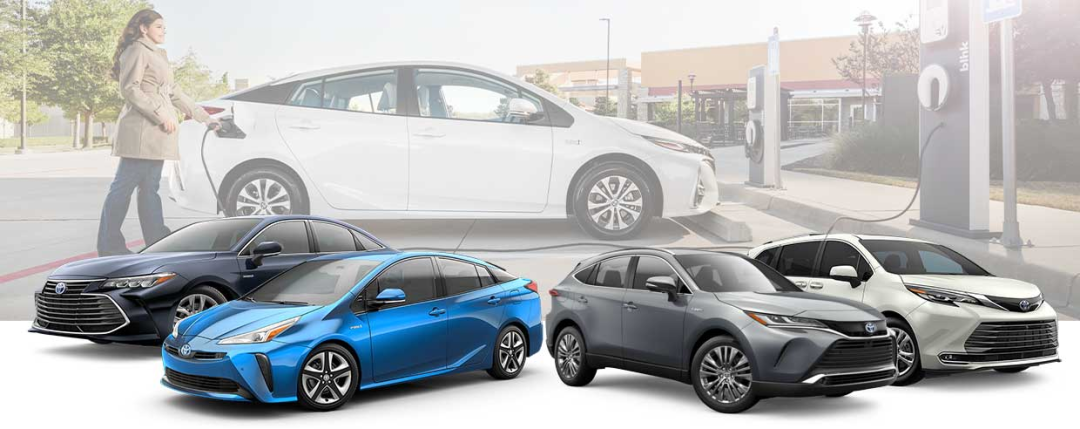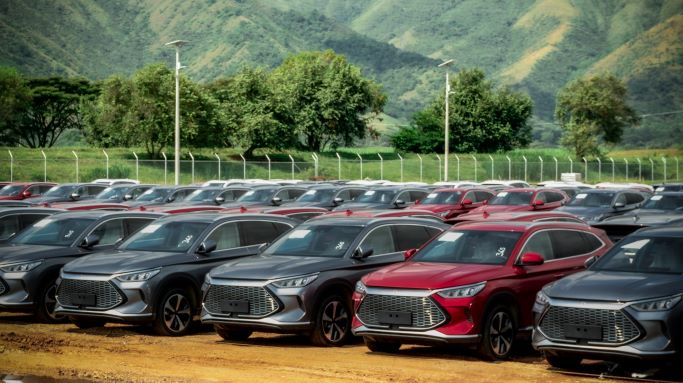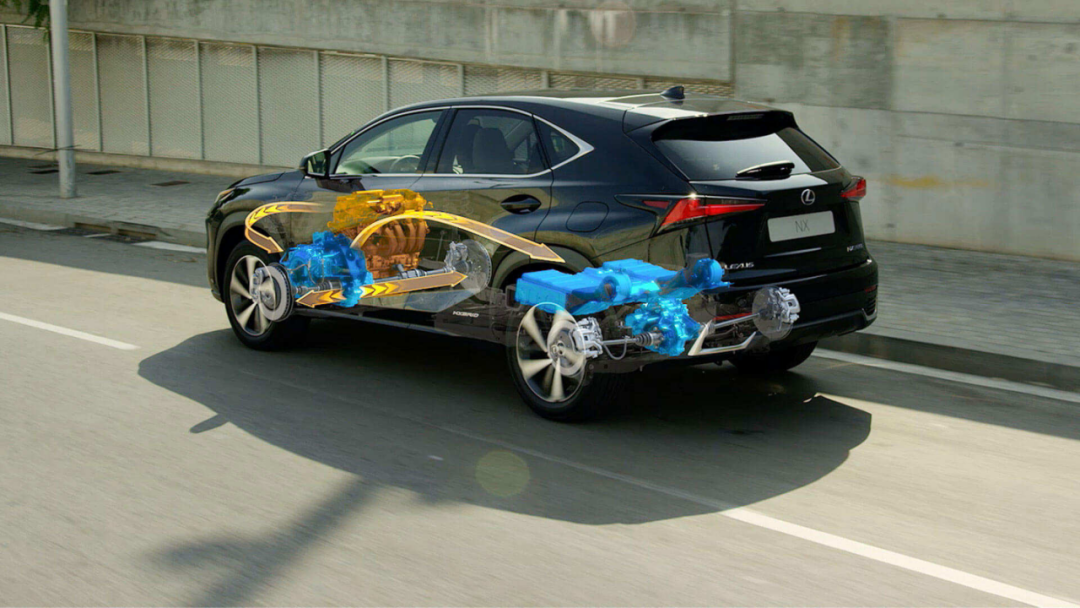Ao Ao Hu
Joy and sorrow are not interlinked, but high fuel prices can bring them on.
Since the introduction of the Prius to China in 2006, and with the successive promotion of various models such as the BYD, hybrid technology has become a familiar term for most people. Nowadays, the emerging new hybrid technologies, as well as the old ones, together with the pursuit of eco-friendliness and fuel economy, can be somewhat overwhelming.
As for the classification of policies and electrification, at present, you can find at least three types of hybrids on the market: plug-in hybrid (PHEV), non-plug-in hybrid (HEV), and mild hybrid (48V, including 24V). Among them, PHEV actually contains range-extended hybrid vehicles (REEV) such as the LI One, the L9, and the Ranz Free. In addition, there are a few special range-extended hybrids in the non-plug-in hybrid category, such as Nissan’s e-POWER model.
The controversy between REEV and PHEV is meaningless, as they are not necessarily the same thing. When they are discussed together, they refer to “range-extended PHEV” or “PHEV without range extending”.
Similarly, for both PHEV and HEV (excluding the 48V hybrid used for lackluster performance), their key feature is whether they are plug-in or not, and they can have multiple modes of operation, such as range extension, dedicated hybrid transmission (DHT), or parallel motor/gearbox hybrid systems.
DHT: Originated from Toyota, popular among many
The reason we skipped a direct order is that DHT hybrid technology is generally the top choice for most consumers when choosing a hybrid vehicle in 2022. DHT can be used for both HEVs and PHEVs. Most HEVs, from the past to today, are actually based on the DHT system, while DHT-based PHEVs have only recently begun to gain a foothold in the market.
If you’ve been following us, you should be quite familiar with this term, as we’ve mentioned it many times in the past year. DHT may have some slight variations in meaning among different manufacturers, but it generally refers to “Dedicated Hybrid Transmission”.## DHT: A New Hybrid Transmission System
The term “specialized” means that the DHT should not be based on the traditional multi-speed transmission system of fuel vehicles. Simply adding an electric motor on the basis of an AT or DCT doesn’t qualify as a DHT hybrid system.
Toyota’s well-known THS hybrid system and Honda’s i-MMD hybrid system are actually both DHT type hybrids. THS uses a set of planetary gears to connect the internal combustion engine with two electric motors, while i-MMD has only one speed ratio and no concept of gears. Clearly, they do not belong to any type of mechanical transmission system commonly used in fuel vehicles.


It’s just that the term DHT appeared much later, in 2016, than Toyota’s hybrid technology, so we generally don’t realize that DHT hybrids are not really new.
Toyota was an early pioneer of DHT hybrid systems, even before the term was coined. What really brought DHT to the attention of the average consumer were the many DHT-type hybrid systems introduced by domestic brands in the last two or three years:
- GWM Lemon DHT
- Chery Kunkun DHT
- Dongfeng Mach-E DHT
- Geely Rayttle Hi·X (divided into DHT and DHT Pro)
- BYD DM-i
- GAC GMC2.0
In addition, there are even more signs of further expansion of this list.
Although Toyota still dominates the hybrid market, BYD DM-i has become the first sensation in this round of DHT offensive by domestic brands. While Toyota has focused almost entirely on HEVs in the past and is not paying enough attention to PHEVs, DM-i is the first to demonstrate the potential of DHT in the PHEV market.
In the past year and a half, this has become the key to BYD’s PHEV sales.

For HEVs, the advantages of DHT are well-known thanks to Toyota’s experience: they are fuel-efficient and do not sacrifice performance excessively with the help of electric drive. HEVs usually do not emphasize performance too much, and the full performance that the small battery can provide to the motor is not sustainable, but it is difficult to see it in the daily use of mainstream family cars. The impression is that the performance is not bad and the car is fuel-efficient.For PHEV, due to the larger battery capacity, it is possible to use a more powerful motor and a longer continuous discharge time, naturally achieving higher performance limits. However, PHEV also suffers from more weight gain. When the battery is exhausted and cannot be recharged in a timely manner, performance and fuel consumption may be affected due to the increased vehicle weight and lack of motor power.
DHT saves PHEV by allowing the vehicle’s own small amount of electric energy to continue to power the electric propulsion system, even in feed power mode, without the need for a large amount of external recharging, thus allowing the hybrid system to continue to operate in HEV mode. Today’s new hybrid technologies emphasize fuel consumption in feed power mode, and their confidence comes from this.
For HEV or blue-plated hybrid consumers, the choice is actually DHT, as non-DHT HEV models are already on the verge of extinction. However, for PHEV or green-plated hybrid consumers, it is necessary to consider whether they have convenient charging conditions. If the answer is no, then it is difficult to avoid long-term feed power driving during use, and a DHT-based PHEV becomes the preferred choice.
As for why DM-i is still dominant today, that is another question.
P2 Single Motor: Rebirth or Relocation?
In addition to DHT hybrids, P2/P3 single-motor plug-in hybrids, which brought PHEV into the image of chicken ribs at the time, are still on the market today. These hybrids generally add a P2 or P3 motor on the basis of multi-gear transmissions in fuel vehicles. Since there is only one motor in the hybrid system, they can only be connected in parallel to the drive.
In addition, hybrid power can be equipped with a P4 or P3 motor on the non-fuel-driven axle, but it generally does not affect the work of the hybrid drive axle. There are also some hybrid systems that add a BSG motor in the P0 position, but its role and influence are not significant in these complex hybrid systems.
Most German, American, Korean, French PHEVs, as well as PHEVs launched by domestic brands in the past two years, belong to this type of configuration. In parallel, when there is sufficient power, the motor can make the whole vehicle achieve extremely strong performance, so it is often used to create high-performance versions, such as the Volkswagen GTE series and the Volvo T8 series.The drawbacks of the DHT configuration of PHEVs are exactly the advantages it offers. Once the battery runs out of power, the lack of electric motor power, coupled with a significant increase in weight compared to traditional fuel cars, will result in weakened fuel performance. Due to issues with infrastructure, most average households still cannot guarantee a relatively easy frequency of charging, even until today. Therefore, in the past when only such PHEV models were available on the market, the sales volume of the entire PHEV market was only a fraction of that of pure EVs.
Today, apart from foreign car manufacturers from Germany, America, France, and South Korea, there are still a few domestic brands launching such hybrids. Changan is the only top domestic car manufacturer without a DHT hybrid, and its new-generation iDD hybrid still adopts the P2 single-motor structure. However, when installed in mid-to-large-sized sedans, the fuel consumption rate is still as low as 5L/100km (UNI-V iDD), which is on par with the numerous DHT PHEVs.
On the one hand, this is due to Changan’s use of a hybrid-specific engine in the iDD and a series of optimization technologies designed specifically for hybrids, which have reduced the energy consumption of the entire system. On the other hand, it is also necessary to pay attention to the difference between the fuel consumption rate during NEDC testing and in reality. As for the P2 single-motor hybrid, due to increased real-world fuel consumption caused by traffic congestion, principles and experience show it is usually higher than that of DHT hybrids. In actual low-fuel consumption states, such as when driving in hybrid mode, DHT hybrids are the better choice. For this reason, Changan is one of the few new hybrid systems that only offer large battery, long endurance PHEVs that have almost 20kWh of power reserve and 100-200km in endurance (even the DM-i has a 51km version).
Another approach is the BYD DM-p, which directly places this type of hybrid in an area in which it excels––high performance. Since the DM-i serves as the main power system, the DM-p can be more creative in enhancing its performance, which helps to increase the upper limit of the model’s selling price. The DM-p also uses a hybrid-specific XIAOYUN engine, which to some extent lowers energy consumption, especially during power supply fuel consumption. However, it still may have more fuel consumption in low-speed real-world traffic than the DM-i.
Range extenders: the final push before going pure electric
Range extender hybrids were once ridiculed as “taking off your pants and farting,” a misconception that led to increased popularization of knowledge about them. Compared to any other hybrid, range extenders are the easiest to understand: burn fuel to generate electricity, use electricity when available, and use fuel when power is insufficient, it’s that simple.As mentioned earlier, extended-range technology is not only about the ideal large battery for long-range, it can also be used for the development of HEVs. For example, the Nissan e-POWER technology, which is considered to be the ideal ancestor, has a battery capacity of “pitiful” 1.5 kWh and naturally does not require or support charging as it is used for HEVs. However, since there are few HEV cases, we will focus on discussing extended-range PHEVs below.
Extended-range plug-in hybrids are essentially a form between DHT hybrids and pure electric vehicles. If DHT hybrids take internal combustion engines to their limits, then extended-range plug-in hybrids are just a step away from pure electric vehicles.
This is also the reason why extended-range hybrids are mostly used to create PHEVs. The e-POWER is used on small cars like the Note with amazing results, achieving extremely low fuel consumption and good driving experience with a simple structure and low cost. However, due to the lack of direct drive ability of the internal combustion engine, once it is used on large vehicles with higher speed ratios, the advantages of the e-POWER will be weakened by the conversion loss of the fuel-to-electricity process.
For autonomous and newly established car companies, extended-range hybrids are used to create PHEVs. Some have provided both extended-range and pure electric versions on the same platform, such as the Voyah FREE, the Niuchuang Ziyoujia NV, and the Changan Shenlan SL03. Although some do not have pure electric versions yet, they are also preparing for the transition to pure electric vehicles in the future, such as the Ideal.
If DHT plug-in hybrids largely eliminate the dependence on charging piles, achieving at least adequate performance and experience without relying on the power grid to recharge, while also achieving lower fuel consumption at high speeds by relying on direct drive from fuel, there will be a corresponding increase in complexity and maintenance difficulty, leaving less space for the battery/range under the same overall cost.
Therefore, extended-range plug-in hybrids are “best” equipped with convenient charging conditions. Not relying on the power grid will obviously reduce the driving experience, and it is best suited for driving habits mainly in middle and low-speed congested urban areas after giving up direct drive capability on the basis of DHT. The more the driving in congested city areas, the less high-speed cruising, and the more convenient the charging conditions (but not to the point of being useless without being plugged in), the more the advantages of extended-range hybrids will be highlighted.
Actually, there are very few hybrid systems that are truly worthless. Even if the P2/P3 single motor plug-in hybrids, which have now been relegated to outdated relics in our eyes, are essentially just improperly matched resources: they are actually only suitable for creating special vehicle models that rely on electric propulsion and can easily exchange short-term high performance. Car manufacturers once hoped to sell them to the masses, but that was the problem.
There are a thousand Hamlets in a thousand people’s hearts. Different usage scenarios, different charging and refueling conditions, different vehicle size and performance requirements, different family car needs, and even different urban policies will all affect the “most suitable hybrid” answer.
In terms of hybrid technology, especially DHT hybrid technology, independent brands are “bending” at a speed that is just as fast as pure electric vehicles. Japanese brands are being forced to change their thinking and speed up the introduction of PHEV versions, while German brands also have intentions to enter the DHT hybrid market. However, they are still being caught up by pure electric vehicles and have mostly focused their efforts in that area for now.
In the eyes of most people, pure electric vehicles are the dazzling stars, while hybrids are just a “transition.” However, the huge success of the BYD DM-i has already demonstrated that there is a potential for the new generation of hybrids that rely on DHT technology to quietly capture half of the market share. This indicates that there is a significant demand among consumers for this so-called “transition”.
Furthermore, the “transition” theory itself is a fallacy that attempts to blend future trends with current consumption. As I mentioned earlier, when we are faced with dream electric vehicles that can easily travel 1000km, fully charge in 10 minutes, never catch on fire or explode, and can be afforded by everyone, will the electric vehicles of today not be a transition?
When oil prices skyrocket, we should be glad that the choice is in our own hands.

This article is a translation by ChatGPT of a Chinese report from 42HOW. If you have any questions about it, please email bd@42how.com.
